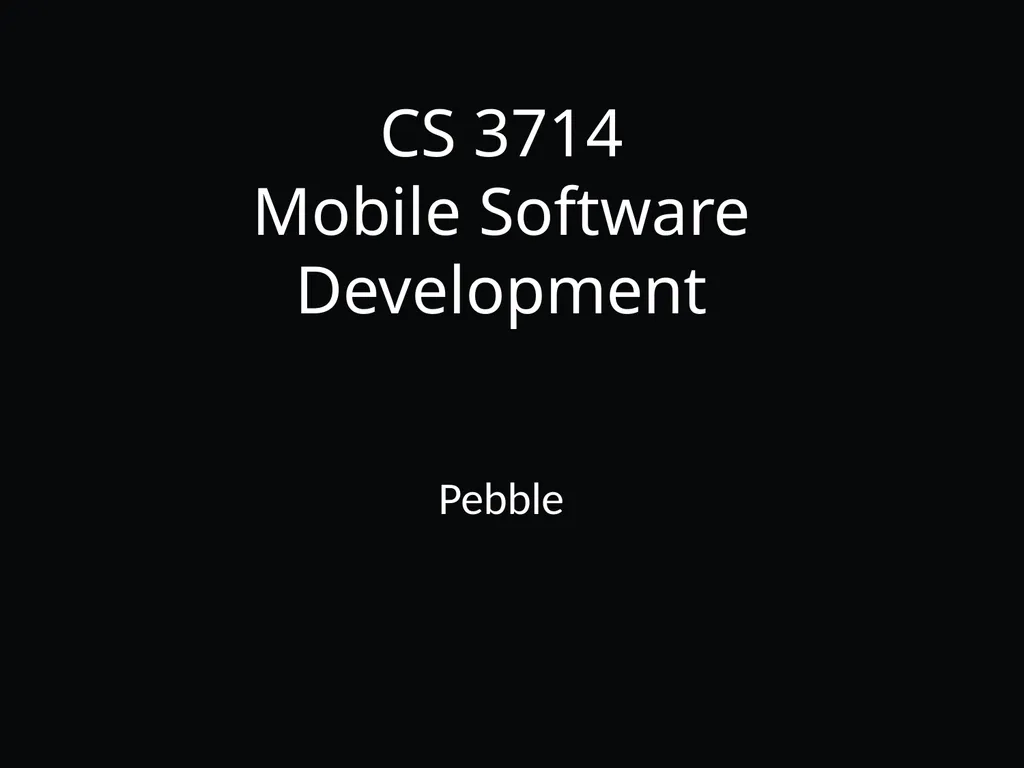CS 3714 Mobile Software Development Pebble Why
Author : marina-yarberry | Published Date : 2025-05-16
Description: CS 3714 Mobile Software Development Pebble Why Should You Care You have a homework on Pebble Development Must include a Pebble Watch App and Android Companion App Wearables seen as the next big frontier in mobile development People buy
Presentation Embed Code
Download Presentation
Download
Presentation The PPT/PDF document
"CS 3714 Mobile Software Development Pebble Why" is the property of its rightful owner.
Permission is granted to download and print the materials on this website for personal, non-commercial use only,
and to display it on your personal computer provided you do not modify the materials and that you retain all
copyright notices contained in the materials. By downloading content from our website, you accept the terms of
this agreement.
Transcript:CS 3714 Mobile Software Development Pebble Why:
CS 3714 Mobile Software Development Pebble Why Should You Care? You have a homework on Pebble Development Must include a Pebble Watch App and Android Companion App Wearables seen as the next big frontier in mobile development People buy these things ($$$) Types of Apps Pebble Watchface Presents information such as the time, weather, and date Involves minimal user interaction Pebble WatchApp App for the Pebble involving some calculation based on user input Pebble Companion App paired with WatchApp Pebble WatchApp that communicates with a smart device Developer Console Scripting Apps WatchApp, so customizable has its own scripting language All development for Pebble watches is in C (yay!) Except for a little bit of optional Javascript Application Elements Pebble apps are event driven Developers must setup callback functions to be executed on user events Every main function has the same basic structure int main() { init(); app_event_loop(); deinit(); } init() will contain all the program setup, callbacks, UI elements etc deinit() will “tear down” things setup in init(), don’t leave anything out app_event_loop(), infinite loop, allows events to be picked up by listeners Pebble API in General All the structs are typedef-ed Instead of struct Window, we can just type Window (phew) Functions relating to certain structs are prefixed with the struct name Ex. window_set_window_handlers deals with Window structs Ex2. layer_add_child(…) deals with layer structs Ex3. menu_cell_basic_draw(…) deals with MenuLayer structs Pebble API in General The Pebble API is object oriented What? In C? Functions are bound to structs Structs have fields storing function pointers in the structs Structs of the same variety (i.e. Layer, MenuLayer, TextLayer) contain instances of their “parents” Access these fields by calling function (a getter, if you will) i.e. Layer *layer = menu_layer_get_layer(menu_layer); Pebble API in General Explicit dynamic memory allocation is discouraged Pebble has very limited memory i.e. calls to malloc and calloc To allocate and free dynamic memory, Pebble API calls should be used i.e. window_create_window, window_destroy_window, layer_create_layer, menu_layer_create_layer Pointers…pointers everywhere….. Function Pointer Example typedef void (* WindowHandler)(struct Window *window) Declares function with void return value that take struct Window to be referenced by WindowHandler type Ex. void my_function() { //stuff } int my_function2(struct Window *window) { //better stuff } void my_function3 (struct Window *window) { //best stuff } WindowHandler *handler = my_function; WindowHandler *handler2 = my_function2; WindowHandler *handler3 = my_function3; Function Pointer Example typedef void (* WindowHandler)(struct Window *window) Declares function with














